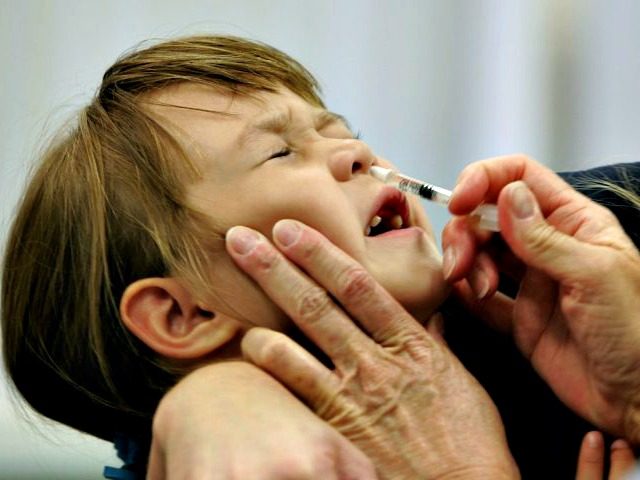Texas public health officials confirmed an alarming 1,155 flu-related deaths between October 1, 2017, the official start of the flu season, and January 10, 2018.
The Texas Department of State Health Services (DSHS) released its latest 2017-18 Influenza Surveillance Report, revealing 1,155 pneumonia and influenza (P&I) related deaths transpired so far this flu season. Of these, 895 reflected older people aged 65-plus who often exhibit underlying health conditions that result in flu complications. However, that is not always the case. The report indicated four children died.
Between October 1, 2017, and the week ending January 6, 2018, DSHS reported nearly 85 percent of flu cases diagnosed via Texas hospital laboratories were Influenza Type A, comprised of subtypes H3N2 and H1N1. Almost 81.5 percent of people had the H3N2 virus. Only 18.5 percent contracted H1N1. Less common was Influenza Type B, with 15.3 percent infected by the strain associated with the Yamagata lineage.
DSHS spokesman Chris Van Deusen told Breitbart Texas there are likely “many, many more flu cases” than the 8,888 listed in the state’s cumulative influenza surveillance report. “There’s not a requirement to report all cases,” he said by email.
Texas mandates that health care providers report all pediatric deaths to public health officials, but they do not require reporting adult mortality rates. Texas county health departments often report such statistics to their residents. Houston health officials confirmed seven flu-related adult deaths. The Austin health department identified 11 P&I fatalities. The flu aggressively gripped Dallas County where 31 adults have died including three individuals aged 37, 38, and 42.
DSHS compiles influenza-related adult mortalities from death records, said Van Deusen. Often these figures take longer to appear on these weekly reports as death certificates must first be finalized.
Nationwide, the U.S. Centers for Disease Control and Prevention (CDC) reported 20 pediatric flu-related deaths and between October 1, 2017, and January 6, 2018. They also accounted for a season total of 60,161 laboratory-confirmed flu cases. This figure only includes those individuals who sought medical attention.
Meanwhile, Texas continues to dominate the Walgreen’s Flu Index Report through the week ending January 6, 2018, with nine of its metropolitan areas ranking in the top 10 cities getting hammered by flu activity. The pharmacy giant also saw influenza cases pick up in Montana, Idaho, Iowa, Wisconsin, North Carolina, California, Georgia, Delaware, and Connecticut.
In the Lone Star State, flu patients recently flooded hospitals like Methodist Dallas Medical Center, which redirected those with “non-emergency flu symptoms” to local urgent care facilities and other hospitals, as Breitbart Texas reported.
Even a few Texas schools shut down amid flu outbreaks. In December, the Sunnyvale Independent School District closed for two days after student absences hit 12 percent in a small district of only 1,800 students. Breitbart Texas reported school officials scrubbed classrooms and buses to thwart the spread of influenza. On Friday, the San Antonio Christian School closed for a “flu day.” Administrators posted on Facebook they hoped to minimize flu exposure by disinfecting the campus. They will reopen their doors on Tuesday following the Martin Luther King holiday.
Breitbart Texas reported concerns arose that the flu vaccine may only be 10 percent effective after a mutated version of the H3N2 virus wreaked havoc in Australia.
“Viruses are always changing,” said Van Deusen. “According to the CDC, it doesn’t appear that there has been as significant a ‘drift’ in the H3N2 virus circulating as there was in the 2014-15 season.”
That said, he noted the CDC expects flu vaccine effectiveness in the 30 to 40 percent range mirroring last year. Like the CDC, state health officials urge Texans six months and older to get a flu shot, noting pregnant women, young children, older adults, and people with chronic health conditions are at a greater risk for complications should they catch the flu.
Van Deusen stated it is not too late to get a flu shot. “We still have weeks of high flu activity left. People shouldn’t put it off any longer.” He said it takes about two weeks after getting inoculated for the immune system to respond. “So the sooner the better.”
On avoiding the flu, Van Deusen reiterated, “Number one is get vaccinated.” He continued, “And then, do those things your mother told you to — wash your hands frequently, cover coughs and sneezes, and if you’re sick, stay home.”
By comparison, DSHS reported 1,347 P&I related adult deaths from October 2, 2016, through January 11, 2017. People 65 years and older comprised 1,062, or 30 percent, of all flu deaths. There were no pediatric deaths during this reporting period.
Follow Merrill Hope, a member of the original Breitbart Texas team, on Twitter.

COMMENTS
Please let us know if you're having issues with commenting.